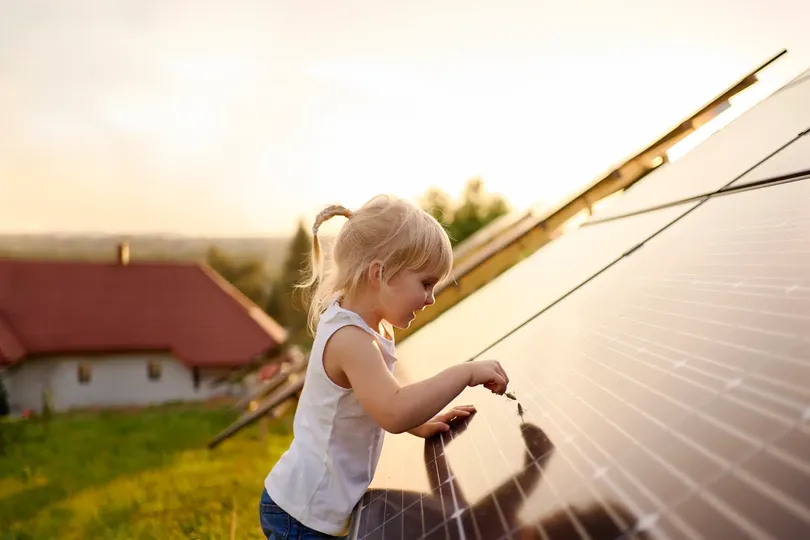
What's the Right Roof Placement for Solar Panels?
With more people choosing to invest in solar panel systems, it’s important to know how to get the most out of them. Deciding on the roof placement is intrinsic to maximising the efficiency of your solar panels. In this blog, we'll dive into the key factors to consider when positioning your solar panels for optimal energy generation. Ready to invest? Get a quote here.
Introduction to Solar Panel Installation
Understanding Solar Panels
Solar panels, also known as photovoltaic (PV) panels convert sunlight into electricity. They are made up of individual solar cells that capture the sun's energy and turn it into energy for your home. These panels are typically installed on rooftops and absorb sunlight.
Importance of Proper Placement
The placement of solar panels on your roof can significantly impact their efficiency and energy production. The angle and direction in which they are installed determine how effectively they capture sunlight. To make the most of your solar investment, it's essential to position them correctly.
What's the Right Roof Direction for Solar Panels?
When it comes to solar panel placement, the direction your roof faces is super important. Ideally in the UK, solar panels should be installed on a south-facing roof. This orientation maximises the exposure to sunlight throughout the day, ensuring consistent energy generation.
What About Angle?
While roof direction is crucial, the angle at which the solar panels are tilted also matters. The optimal angle depends on your location's latitude. In the UK this is usually between 30-40 degrees.
What's More Important, Direction or Angle?
Both direction and angle are important considerations, but if you had to prioritise, roof direction comes out on top. This is important to consider if you don’t have the best conditions for your panels.
Factors Influencing Solar Panel Placement
Several factors influence the placement of solar panels on your roof. Let's explore these key considerations:
Sun Exposure and Shading
Unobstructed sun exposure is essential for optimal energy production. Shading from nearby buildings, trees, or other objects can reduce efficiency. Prioritise a location with minimal shade throughout the day.
Local Climate and Weather Patterns
Different climates affect solar panel efficiency. Areas with more sunny days have higher potential for energy generation. Despite the UK being a little gloomy, you can still effectively generate solar power at less sunny times.
Roof Size and Condition
The size and condition of your roof dictate how many panels can be installed. Our experienced solar professional can assess your roof's capacity and recommend the best placement options.
Considerations for Flat Roofs
Benefits of Solar Panels on Flat Roofs
Solar panels can provide numerous benefits when installed on flat roofs, including:
Flat roofs provide a large, unobstructed area for solar panel placement, allowing for maximum solar energy production.
Solar panels can significantly reduce energy costs and reliance on traditional energy sources, helping to mitigate your carbon footprint.
Solar panels are a potential value-add for any property, and their presence can significantly increase the value of a building.
Solar panels are a clean, renewable energy source that produce no pollution, emissions, or waste products during operation, making them a sustainable choice for the environment.
Placement Strategies for Flat Roofs
When it comes to placement strategies for flat roofs, there are a few key considerations to keep in mind:
Solar panels should be oriented towards the south, to maximise exposure to sunlight. A tilt angle of between 10 to 15 degrees is generally recommended to optimise energy production.
Obstructions: Flat roofs can often have obstructions such as vents and skylights that need to be taken into account when placing solar panels. It’s important to leave sufficient space around these obstructions to prevent shading and ensure your solar panels work efficiently.
Solar panels can be heavy, meaning it is essential to spread their weight evenly across the roof to prevent any damage to the existing structure.
By considering the above placement strategies, you can maximise the benefits of solar panels on flat roofs, helping to reduce energy costs and lower your carbon footprint.
Assessment and Installation Process
Our team of experts analyse your roof’s characteristics and create a customised plan that maximises energy generation. The plan is shared in a detailed quote showing a breakdown of the costs and savings involved, ensuring you know exactly what you’re paying for.
Choosing the right roof placement for your solar panels can significantly impact their efficiency and your energy savings. By considering factors such as roof direction, angle, shading, and local conditions, you can make the most out of your solar panel installation. Investing in clean and renewable energy not only benefits your wallet but also contributes to a greener and more sustainable future for us all.
Share this article